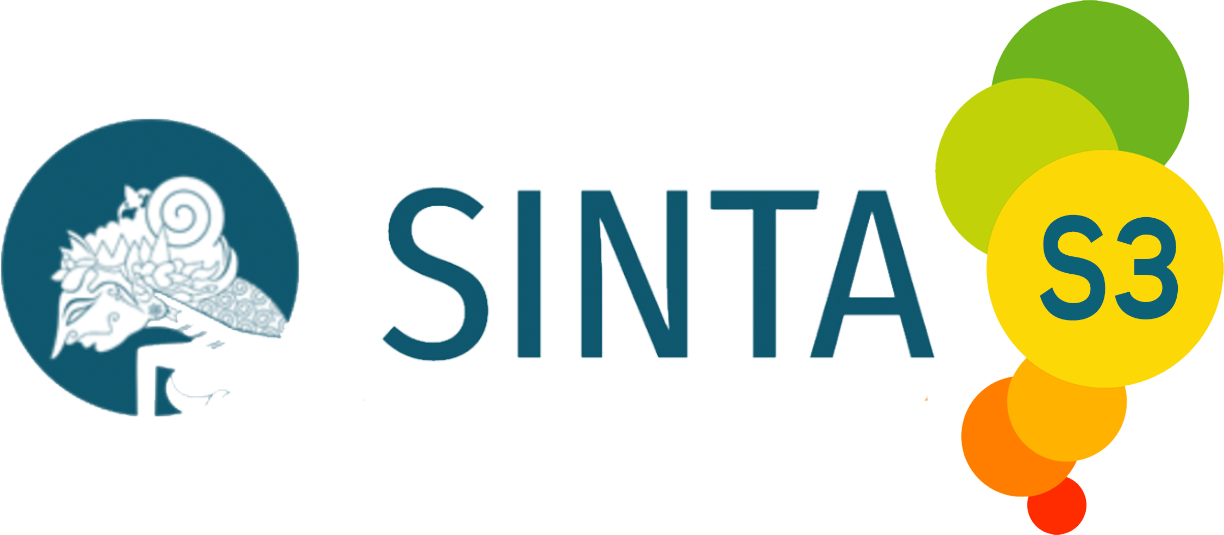Kadar Low Density Lipoprotein dan Gambaran Histopatologi Hepar pada Tikus Model Diabetes Mellitus Tipe 1 dengan Pemberian Ekstrak Etanol Curcuma longa L
DOI:
https://doi.org/10.21776/ub.jitek.2016.011.01.1Keywords:
Diabetes mellitus type 1, etanol extract of turmeric, Histopathology of liver and LDLAbstract
This study was conducted to determine levels of LDL and liver damage in rats (Rattus norvegicus) models of type 1 diabetes mellitus inducted by streptozotocin (STZ) with etanol extract of turmeric (Curcuma Longa L) therapy. Animals used rat (Rattus norvegicus) 3-month-old males who were divided into 5 groups, each group consisting of four mice. The group was divided according to treatment: negative control (not induced by STZ), the positive control group (STZ induced), groups of rats DM 1 with etanol turmeric extract therapy a dose of 1.2 g / kg, groups of rats DM 1 with etanol turmeric extract therapy a dose of 1.8 g / kg, and groups of rats DM 1 with etanol turmeric extract therapy a dose of 2.7 g / kg. LDL levels measured by direct method and the severity of liver damage was observed through histopatology picture. The results showed that the etanol extract of turmeric dose of 2.7 g / kg in a rats model of type 1 diabetes mellitus can lower LDL levels up to 59.55%, and reduced the severity of fatty liver with reduced fat vacuoles. The conclusion from this study that the etanol extract of turmeric contains antioxidants that can lower LDL levels and reduced the severity of fatty liver in type 1 diabetes mellitus.References
Angulo, 2002. Nonalcoholic Fatty Liver Disease. N Engl J Med 2002: 3469 (16): 1221-31.
Barik, R., S. Jain, D. Qwatra, A. Joshi, G.S. Tripathi and R. Goyal. 2008. Antidiabetic Activity of Aqueous Root Extract of Ichnocarpus Frutescens in Streptozotocinnicotinamide Induced type II diabetes in rats. Indian Journal of Pharmacology 40(1): 19-22.
Botham, K.M., and Mayes, P.A., 2009. Pengangkutan dan Penyimpanan
Lipid. Jakarta: EGC. Hal: 225-238.
Fall, T.,Hamlin, H.H., Hedhammar, A., Kampe, O., and Egenvall, A., 2007. Diabetes Mellitus in a Population of 180.000 Insured Dogs: Incidence, Survival, and Breed Distribution. J Vet Intern Med 21:1209-1216.
Ganong, William. F. 2002. Buku Ajar Fisiologi Kedokteran; editor edisi bahasa indonesia, H.M. Djauhari Widjajakusumah-ed.20. EGC. Jakarta.
Gusti, I. A. 2013. Suplementasi Kombinasi Tempe M-2 dengan Wortel (Daucus carrota) Meningkatkan HDL dan Antioksidan Total, serta Menurunkan LDL, F2-isoprostan dan IL-6 pada Tikus Wistar Aterosklerosis [Disertasi]. Program Pascasarjana. Universitas Udayana.
Hoenig, M. 2002. Comparative Aspects of Diabetes Mellitus in Dogs and Cats. Molecular and Endocrinology 197: 221-229.
Kamagate A, Shen Qu, German P, Dongming Su, Dae Hyun Kim, Sandra S, Marcia M, and Henry D. 2008. FoxO1 Mediates Insulindependent Regulation of Hepatic VLDL Production in Mice. J Clin Invest. 2008; 118(6):2347-2364
Kohli K., Ali J., Ansari M.J., and Raheman Z. 2004. Curcumin: A Natural Antiinflammatory Agent. Indian Jurnal of Pharmacology. 37(3): 141-147
Lennernas H, Fager G. (1997). Pharmacodynamics and Pharmacokinetics of the HMGCoA Reductase Inhibitors. Clin. Pharmacokinet 1997; 403-425.
Mayfield J. 1998. Diagnosis and Classification of Diabetes Mellitus: New Criteria. American Family Phyician 58 (6): 1-8
Nugroho, A. E. 2006. Animals Models Of Diabetes mellitus: Pathology and Mechanism of Some Diabetogenics. Laboratorium Farmakologi Dan Toksikologi, Bagian Farmakologi dan Farmasi Klinik, Fakultas Farmasi Universitas Gajah Mada Yogyakarta.
Priyadarsini, K.I., Maity, D.K., Naik, G.H., Kumar, M.S., Unnikrishnan, M.K., Satav, J.G., dan Mohan, H. 2003. Role of Phenolic OH and Methylene Hydrogen on The Free Radical Reactions and Antioxidant Activity of Curcumin. Free Radical Biology and Medicine, 35(5): 475– 484.
Setiawan, B., dan Ernawati. 2007. Efek Proteksi dari Curcumin Terhadap Sel Endothelium pada Stress. Department Of Pharmacology, Faculty of Medicine Wijaya Kusuma University, Surabaya.
Wijaya A. Parameter Risiko Penyakit Vaskuler Aterosklerotik Koroner dan Serebral. Forum Diagnosticum. 1995; 3: 1-15.
Sharma, R.A., A. J. Gescher, W. P. Steward. 2005. Curcumin: The Story So Far. European Journal of Cancer, 41:1955–1968.
Sudiono, J. B., Kurniadhi, Hendrawan, A., dan Djinantoro, B. 2003. Ilmu Patologi. Penerbit EGC
Downloads
Published
Issue
Section
License
Copyright (c) 2017 Herlina Pratiwi, Djoko Winarso, Nunung Handoyo

This work is licensed under a Creative Commons Attribution 4.0 International License.
Authors who publish with this journal agree to the following terms:
- Authors retain copyright and grant the journal right of first publication with the work simultaneously licensed under a Creative Commons Attribution License that allows others to share the work with an acknowledgement of the work's authorship and initial publication in this journal.
- Authors are able to enter into separate, additional contractual arrangements for the non-exclusive distribution of the journal's published version of the work (e.g., post it to an institutional repository or publish it in a book), with an acknowledgement of its initial publication in this journal.
- Authors are permitted and encouraged to post their work online (e.g., in institutional repositories or on their website) prior to and during the submission process, as it can lead to productive exchanges, as well as earlier and greater citation of published work (See The Effect of Open Access).















